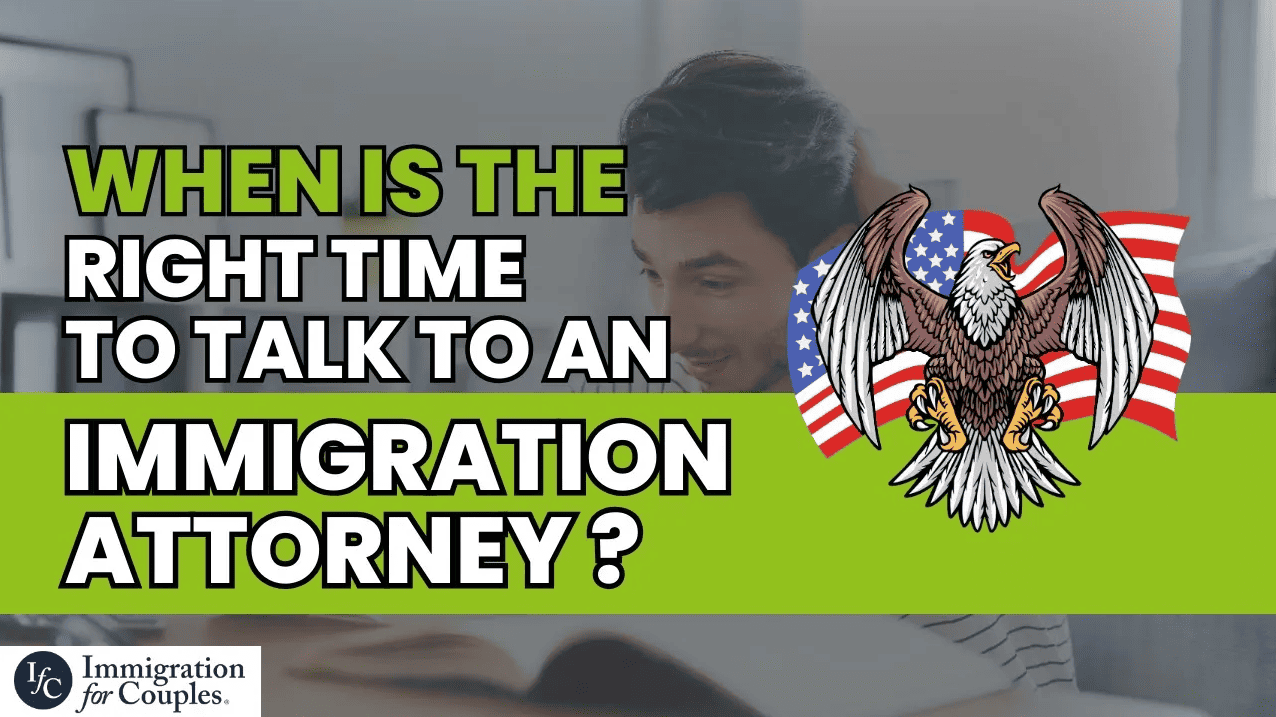When your fiancé petition, your I129F, or your I130 is pending, are you allowed to visit the United States as a visitor with your fiancé or your spouse?
This is a huge question. People have been separated for a long time. The cases are taking a very long time to process. In order to be able to live with the processing times that we’re currently seeing in many cases of over a year, many people are just trying to figure out how can I see the person I love? I don’t want to be separated physically that long.
The first thing you have to understand about immigration is that there are two types of intentions that you can have legally when you enter the United States. There’s immigrant intent and then there’s non-immigrant intent. Immigrant intent is when you’re moving to America. You want to live and work here indefinitely. Non-immigrant intent is when you’re coming to the US to do something specific like going on a vacation or visit or going to college. Maybe you have a temporary job or something like that.
There are many types of non-immigrant intent. But the basic concept is that you’re coming for a specific purpose and you’re intending to leave the United States. Why does this matter? What does this have anything to do with what we’re talking about? The question gets a little bit tricky when we’re talking about situations where people are already filing as fiancés or spouses of US citizens.
In general, if you are married to a US citizen or you’re engaged to a US citizen and you’ve already filed documentation with the US government saying, “I intend to permanently move to the United States.” In some ways you’ve expressed that you have immigrant intent because you’ve actually said, “I plan to move to the United States.”
That doesn’t necessarily mean that you cannot visit. It just makes it harder and it makes it a little bit riskier. What is allowed is if you have filed for a fiancé case or a spouse case and it’s pending, you can have a non-immigrant intent to visit in the meantime. Only when my fiancé visa case is completed or when my spouse visa case is completed, do I have immigrant intent to move to the United States. That’s how those two things are co-exist.
People typically who are either doing a fiancé visa or a spouse visa, they can visit the United States if they have a way to do so and if the officer that inspects them at the border or at the airport believes them that they have non-immigrant intent on this visit. It’s definitely possible that the customs officer says, “I don’t believe that you’re gonna leave after three weeks or two months or whenever you’ve planned to stay. I think you’re gonna try to stay here.” It’s possible that they can turn you back for that reason.
One thing I want to point out is that for people from a lot of countries, it’s just hard to visit the United States anyway. If you happen to be from a country that is in a typically pretty good position economically, your country might participate in the visa waiver program which means that if you don’t have a serious criminal history, you can fill out the ESTA documents and you can just visit the US for 90 days in most cases. Typically the people who can come and visit are those who have a tourist visa.
If you’re from a country that you can’t get in on visa waiver and you don’t have a tourist visa, you can try applying for a tourist visa but those are typically denied when you try for a tourist visa from a country that has a high rate of overstays of tourist visas. A lot of countries in Latin America or just less developed areas of the world where the US government is suspicious that you’ll probably want to stay rather than going back home just because a lot of people from your country have done that in the past. You might not be able to visit simply because you don’t have a way to get any kind of non-immigrant permission to come and visit while you’re waiting for your case. You simply have to wait.
You can see why this is such a complicated situation. Sometimes people asking this question are in the United States and they’re applying for adjustment of status. They have an I-130 but they’ve also applied for a green card at the same time. They cannot leave the United States and go abroad and come back unless they have advanced parole which is like a travel permit. If you leave, you’re going to abandon your case entirely and have to start over outside of the United States.
Sometimes that issue gets rolled in there too and if that’s your situation., please know that does not mean that you are allowed to travel while that’s pending. Every situation is very different. Hopefully that gives you all some more perspective on that question.





